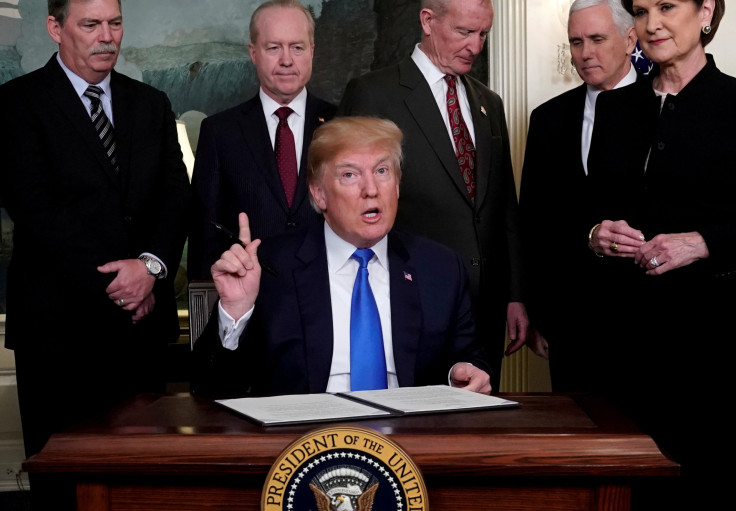Strong US Job Growth Expected In July, Tariffs Yet To Bite

U.S. companies likely maintained a strong pace of hiring in July, suggesting that the robust economy was helping the labor market to weather trade tensions, which could allow the Federal Reserve to raise interest rates again in September.
Nonfarm payrolls probably rose by 190,000 jobs last month after increasing 213,000 in June, according to a Reuters survey of economists. The Labor Department will publish its closely watched employment report on Friday at 8:30 a.m.(1230 GMT).
"We remain watchful for signs that the protectionist trade policies put in place by the Trump administration are slowing hiring, but right now the labor market appears resilient," said Michael Gapen, chief economist at Barclays in New York.
President Donald Trump's administration has imposed duties on steel and aluminum imports, provoking retaliation by the United States' trade partners, including China, Canada, Mexico and the European Union. It has also slapped 25 percent tariffs on $34 billion worth of Chinese imports.
Beijing fought back with matching tariffs on the same amount of U.S. exports to China. On Wednesday, Trump proposed a higher 25 percent tariff on $200 billion worth of Chinese imports.
Economists have warned that the tit-for-tat import duties, which have unsettled the U.S. stock market, could undercut manufacturing through disruptions to the supply chain and put a brake on the strong economic growth.
There have also been concerns that the trade tensions could dampen business confidence and lead companies to shelve spending and hiring plans. But a $1.5 trillion fiscal stimulus, which helped to power the economy to a 4.1 percent annualized growth pace in the second quarter, is assisting the United States in navigating the stormy trade waters.
"The U.S. is in a better position to ride through the tariff concerns because of a strong economy," said Sung Won Sohn, chief economist at SS Economics in Los Angeles. "But those fears could materialize going forward if things get worse."
Tight labor market
The Federal Reserve left interest rates unchanged on Wednesday while painting an upbeat portrait of both the labor market and economy. The U.S. central bank said "the labor market has continued to strengthen and economic activity has been rising at a strong rate." The Fed increased borrowing costs in June for the second time this year.
While the statement accompanying Wednesday's rate decision made no mention of the tariffs, Fed Chairman Jerome Powell told lawmakers last month that "lots and lots of individual companies have been harmed by this. We don't see it in the aggregate numbers yet because it is a $20 trillion dollar economy and these things take time to show up."
The economy needs to create about 120,000 jobs per month to keep up with growth in the working-age population. Job growth averaged 215,000 per month in the first half of this year.
The unemployment rate is forecast falling one-tenth of a percentage point to 3.9 percent in July. It rose in June from an 18-year low of 3.8 percent in May as job seekers piled into the labor market, likely confident of their employment prospects.
A tightening labor market and robust domestic demand have, however, raised the prospect of the economy overheating.
"At this stage of the cycle, the Fed would probably welcome some moderation in the trend in employment growth against a backdrop of continued strong GDP growth, as it would imply an acceleration in productivity growth," said Michelle Girard, chief economist at NatWest Markets in Stamford, Connecticut.
But for now the vibrant labor market is not generating wage inflation. Average hourly earnings are forecast increasing 0.3 percent in July after rising 0.2 percent in June.
That would keep the annual increase in wages at 2.7 percent in July. The Fed's preferred inflation measure, the personal consumption expenditures (PCE) price index excluding the volatile food and energy components increased 1.9 percent in June. The core PCE hit the central bank's 2 percent inflation target in March for the first time since December 2011.
Job gains in July were likely across all sectors. Manufacturing payrolls are forecast rising by 22,000 jobs after increasing by 36,000 in June. Construction companies likely added to the 13,000 jobs created in June. Government employment is forecast increasing by 1,000 jobs in July.
© Copyright Thomson Reuters 2024. All rights reserved.





















